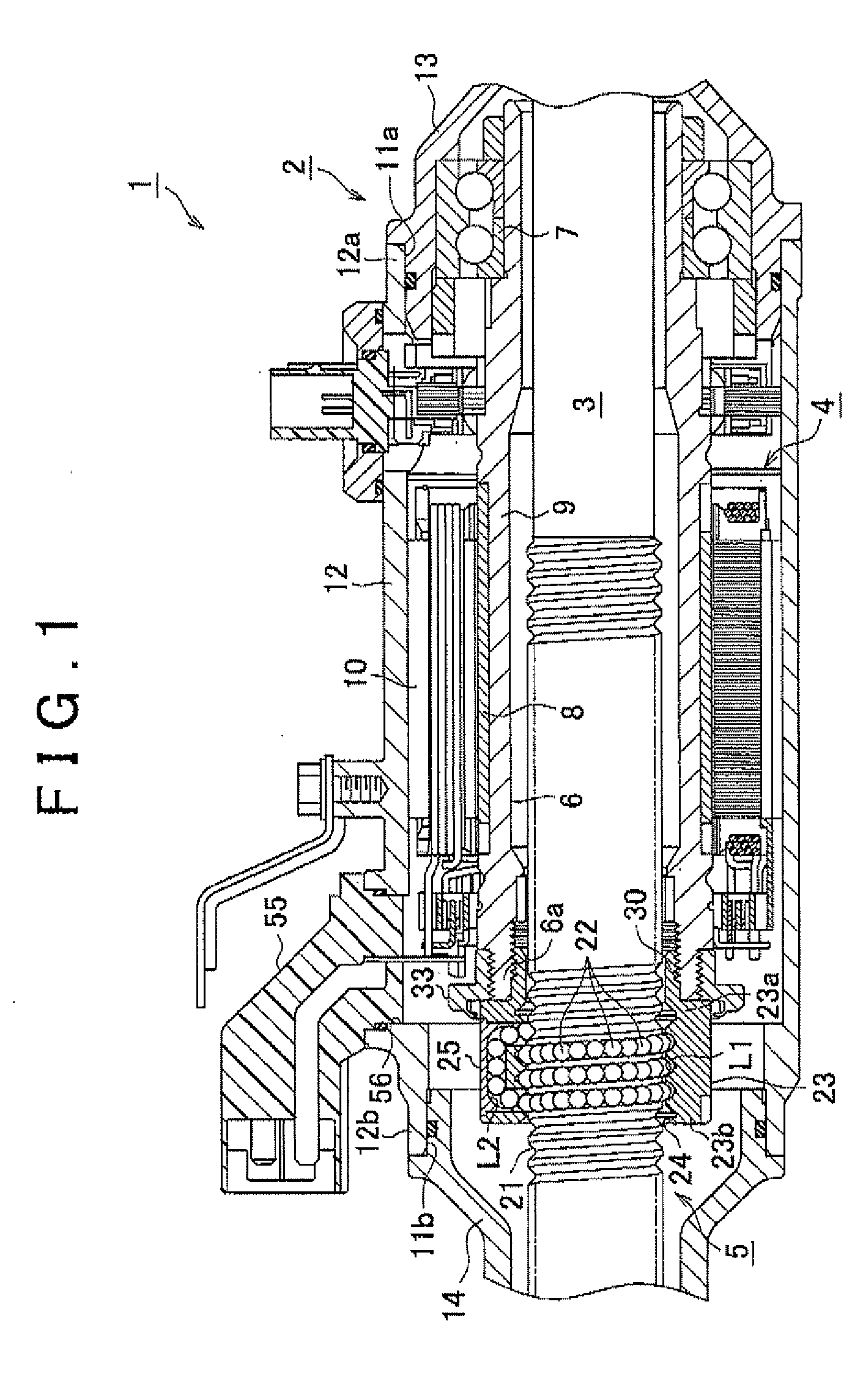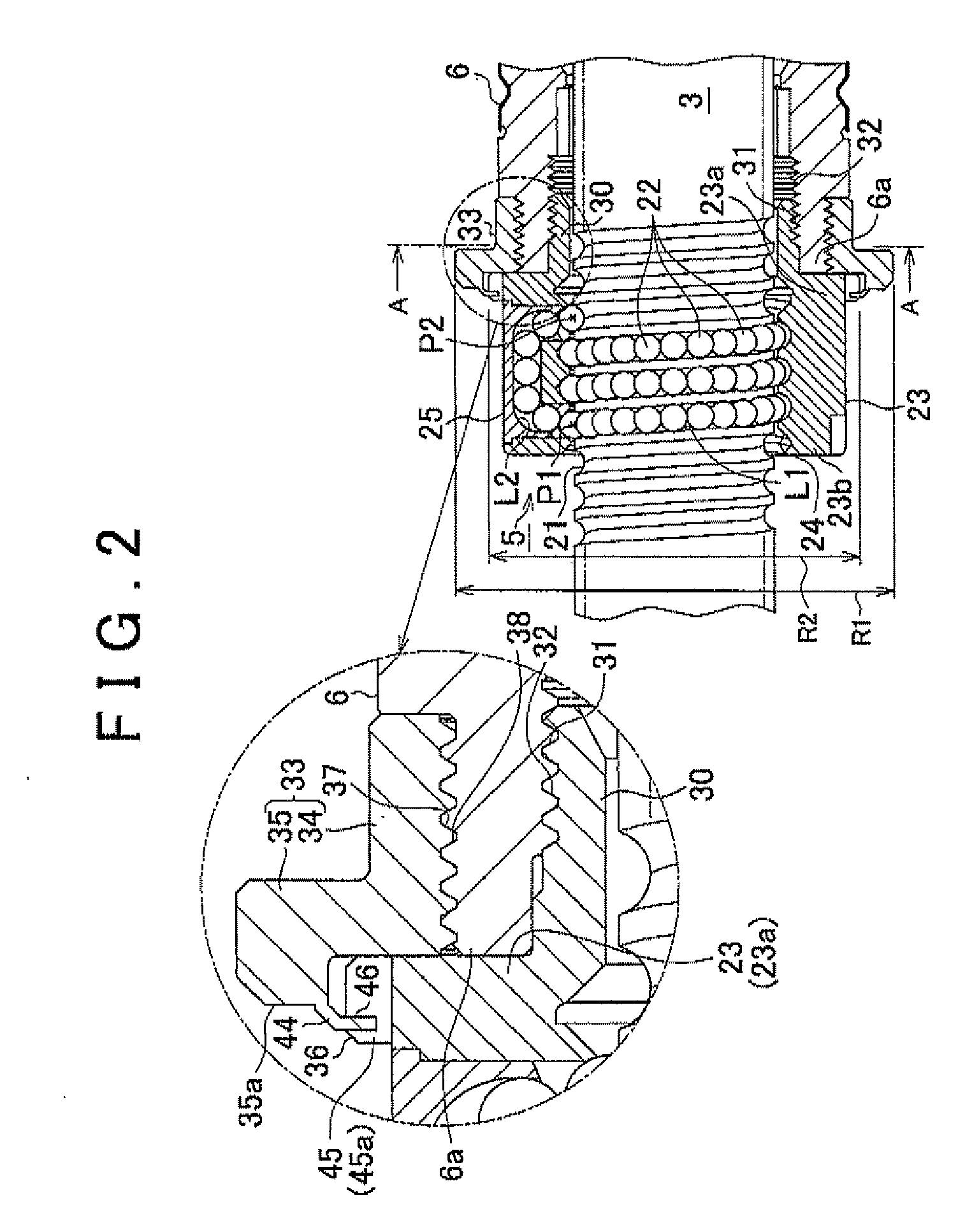Electric power steering system
a technology of electric power steering and steering shaft, which is applied in the direction of electric steering, power driven steering, vehicle components, etc., can solve the problems of affecting the steering feel, so as to achieve good steering feel, high reliability, and sufficient quiet
- Summary
- Abstract
- Description
- Claims
- Application Information
AI Technical Summary
Benefits of technology
Problems solved by technology
Method used
Image
Examples
Embodiment Construction
[0039]Hereafter, an embodiment of the invention will be described with reference to the accompanying drawings. As shown in FIG. 1, in an electric power steering system (EPS) 1 according to the embodiment, a rack shaft 3 that passes through a substantially cylindrical housing 2 is supported by a rack guide (not shown) and a plain bearing (not shown). Thus, the rack shaft 3 is supported and housed in the housing 2 so as to be movable along its axial direction. The rack shaft 3 is connected to a steering shaft via a known rack-and-pinion mechanism so that the rack shaft 3 reciprocates along the axial direction in response to a steering operation.
[0040]The EPS 1 includes a motor 4 that serves as a drive source, and a ball screw device 5 that converts the rotation of the motor 4 into axial movement of the rack shaft 3. The EPS 1 according to the embodiment is formed as a rack-assist-type EPS in which the rack shaft 3, the motor 4 and the ball screw device 5, which are fitted together, ar...
PUM
 Login to View More
Login to View More Abstract
Description
Claims
Application Information
 Login to View More
Login to View More - R&D
- Intellectual Property
- Life Sciences
- Materials
- Tech Scout
- Unparalleled Data Quality
- Higher Quality Content
- 60% Fewer Hallucinations
Browse by: Latest US Patents, China's latest patents, Technical Efficacy Thesaurus, Application Domain, Technology Topic, Popular Technical Reports.
© 2025 PatSnap. All rights reserved.Legal|Privacy policy|Modern Slavery Act Transparency Statement|Sitemap|About US| Contact US: help@patsnap.com



